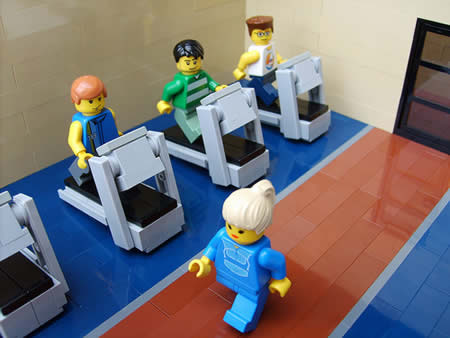Why do people continue to buy treadmills and exercise bikes?
 Subscribe to Decision Science News by Email (one email per week, easy unsubscribe)
Subscribe to Decision Science News by Email (one email per week, easy unsubscribe)
HOW TO MAKE MORE REALISTIC ESTIMATES OF FUTURE BEHAVIOR

The Journal of Consumer Research is getting awfully good at getting articles picked up in the New York Times. The JCR Web site has directed our attention to an article by Robin Tanner and Kurth Carlson that looks people’s forecasts of their own future exercise behavior.
The gist is that when people answer a question like “how often will you exercise next week?”, they reply as if the question were “under ideal circumstances, how often will you exercise next week?”
Of course, most weeks aren’t ideal weeks, so if you are interested in getting a more accurate forecast of your own behavior in the future, it helps to be reminded of this.
So, how to use behavioral science to help yourself? When asked to make a forecast 1) generate an answer under ideal conditions, then 2) generate your forecast. Though you’d think the ‘ideal conditions’ would skew your forecast upwards due to anchoring, it does not. In fact, it causes you to generate more realistic forecasts of your own behavior.
(This reminds me of when I was running a seminar series and the visiting speaker asked me how long it would take to get from Columbia to Penn Station after the talk. I gave him my estimate, which he naturally believed was biased — some decision researchers think that everybody else is biased — and that it wouldn’t give him enough time. He demanded proof. So, I pulled up the train timetables from the MTA website and, sure enough, my estimate not only factored in waiting time and travel time, but also a generous buffer for the late trains. Being a nerd, I’d timed the trip perhaps 30 times and recorded it in my Palm Pilot; I live to make accurate forecasts. I was very close to replying “Dude. Like you, I decision-making biases for a living. I think I can give you a calibrated estimate of a trip I take every day.” But I held my tongue. –Ed).
Photo credit: http://flickr.com/photos/66535891@N00/2701310395/


[…] rationality | Tags: rationality tips | by jsalvati Decision Science News gives a tip on generating less biased estimates of your own future behavior: When asked to make a forecast 1) generate an answer under ideal conditions, then 2) generate your […]
February 17, 2009 @ 6:46 pm
[…] Source: Why do people continue to buy treadmills and exercise bikes? […]
February 23, 2009 @ 5:23 pm
[…] Source: Why do people continue to buy treadmills and exercise bikes? […]
February 23, 2009 @ 11:44 pm